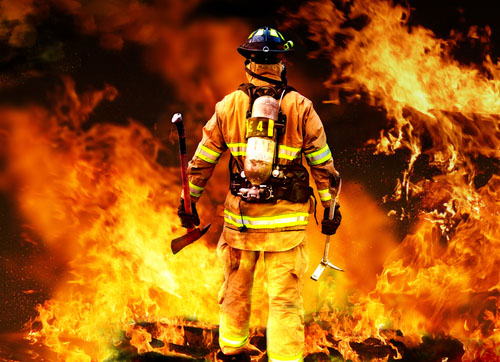James Gore, a supervisor in Sonoma County, which was ravaged by multiple fires in October 2017, said 13 communities in high-risk areas have put together maps, and residents are now practicing new escape routes more regularly.
“Everybody is playing catch-up. Everybody is trying to address the new normal,” said Mr. Gore, who is leading the statewide county association’s effort to help others better prepare.
Seven of California’s 20 most destructive wildfires and five of its deadliest have occurred in just the last 13 months. The Tubbs Fire that hit Sonoma and Napa Counties last year killed 22 people; it was considered the state’s most destructive before the Camp Fire ignited. The latter has killed at least 88 people and burned roughly 18,800 structures.
Cal-Fire, the state fire-protection agency, has classified more than 180 locales in 31 counties—from Siskiyou on the state’s northern border to San Diego to the south—as being in the most hazardous fire zones. Paradise is on the list, as are communities like Berkeley, Oakland, Los Angeles, Malibu, Monterey, Santa Rosa and Thousand Oaks.
“There is a whole new focus,” said Graham Knaus, the executive director of the California State Association of Counties. “When you have wildfires moving 80 football fields per minute…it causes a full revaluation on how best to move forward.”
Rebecca August, a public lands advocate with Los Padres ForestWatch, a nonprofit, attended a hearing on California’s emergency-warning system earlier this week. She said attendees talked about building fire-safe shelters in area that might be hard to evacuate.
“I hadn’t heard people talking about that before,” she said.
Citizen groups are also taking action. Priscilla Abercrombie, who lives on Fitch Mountain outside of Healdsburg, in Sonoma, is part of a group that has put together a phone tree residents can use to help evacuate if a fire or other natural disaster strikes. Healdsburg firefighters debriefed her group this week about the recent fires.
“People are really motivated,” she said. “The take-home message is to know who your neighbor is and ways to get off the mountain, and have a plan, and have your stuff ready.”
Perhaps the most frightening aspect of the Camp Fire that destroyed Paradise, a former Gold Rush town of 26,000, was how quickly it moved. The fire was first noticed before 7:00 a.m on Nov. 8, and an hour later the entire town was under an evacuation order. Two hours after sundown, the community was all but wiped out.
“We had planned for a wildfire, what we got was a hydrogen bomb,” said Jim Broshears, Paradise’s emergency-operations center coordinator.
After a particularly bad fire season in 2008 in the area, a grand jury report laid out critical shortcomings in preparedness. The report concluded that additional evacuation routes were necessary after thick smoke forced three main roads out of Paradise to close, and left a fourth choked with a single lane of traffic.
One new paved evacuation road has been built since then, a northbound route that took 10 years to complete. Kim K. Yamaguchi, who lobbied for the project when he was on the Butte County Board of Supervisors, said he has received thank-you messages from people who used it to escape the Camp Fire. “Touched my heart,” he said.
Officials say a plan put in place after 2008 to evacuate Paradise in phases to better control traffic flows didn’t work well because embers sparked hundreds of spot fires across the town, forcing evacuation orders to be issued in rapid succession.
Officials say it would take much more than a few million dollars to finance the road projects rural communities like Paradise need to evacuate thousands of people quickly.
Phil John is chairman of the Paradise Ridge Fire Safe Council, which has tried for years to advise residents how to create defensible space around their homes and what to take with them when they evacuate.
After the deadly and fast-moving Tubbs Fire decimated large parts of Santa Rosa last year, Mr. John said, he reworked his group’s safety presentations to put even more emphasis on how to evacuate quickly.
“My guts are tore up because I gave my whole life to teach people what to do, and it just didn’t work,” he said. “There’s people that are dead right now because we didn’t get to them, and I have to live with that.”













